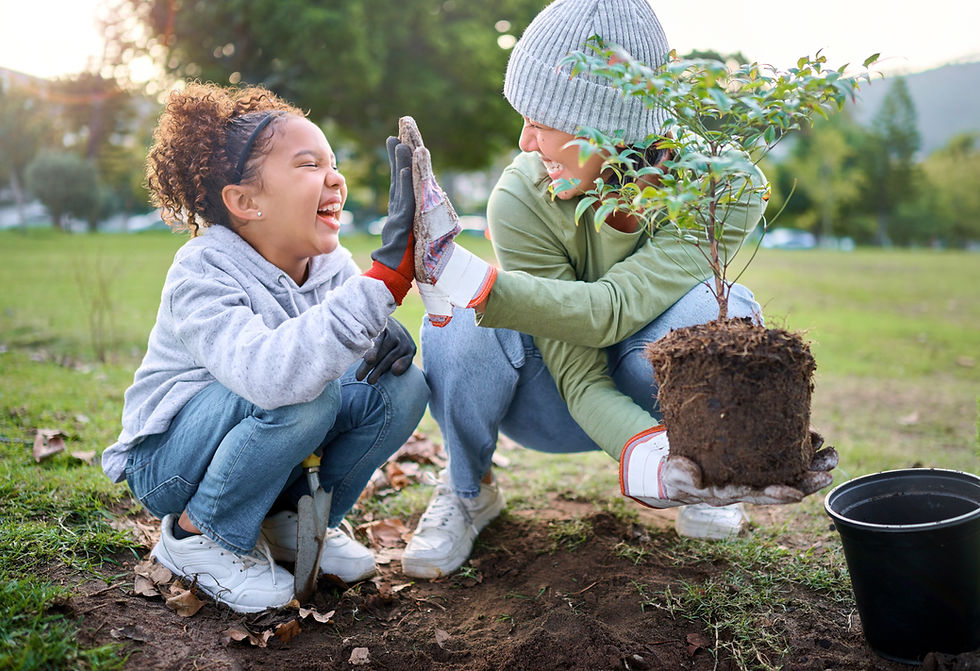The Benefits of Keder Greenhouse Gardening in Education
- David Domoney

- Jul 18
- 4 min read
Updated: Oct 23
Gardening is one of the most rewarding ways to connect with nature. For schools, it creates an engaging space for children to grow, learn, and thrive.
Find out how Keder Greenhouses can and will help enrich people in education with the joy of gardening.
Why Gardening Is Good for Children
Gardening supports both physical and mental development. It builds confidence, encourages patience, and fosters care and curiosity about the natural world.
Working with plants calms the mind. It offers children a quiet, purposeful activity that reduces stress and supports emotional wellbeing. Especially helpful in busy school environments.
It also gets children moving. Digging, sowing, watering and harvesting build strength, coordination, and focus in a relaxed, hands-on setting.
Finally, it brings a sense of achievement. Whether growing a radish or a sunflower, students feel pride in nurturing life from seed.
How Gardening Supports the Curriculum
Gardening complements classroom learning at all ages. In the early years, it supports play-based learning through colour, texture, smell, and more.
For key stages one and two, it reinforces core subjects:
· Science – life cycles, soil types, pollination, and plant growth.
· Maths – measuring stems, calculating spacing, and tracking harvest dates.
· English – writing planting diaries, descriptive essays, and signage.
· Art – drawing, painting, and designing garden layouts and labels.
At secondary level, it links to:
· Biology – photosynthesis, reproduction, and ecosystems.
· Geography – climate zones, food miles, and sustainability.
· Food Tech – harvesting and preparing healthy, seasonal food.
· PSHE – teamwork, patience, and responsibility.
Every task, be it watering, weeding, or composting, teaches something valuable beyond the garden fence.
Growing Tips for Schools
Getting started with greenhouse gardening in schools can be straightforward. One of the best approaches is to begin with fast-growing crops. Lettuce, spinach, and radishes are reliable choices which germinate quickly and give children tangible results within a few weeks.
Early wins are vital in keeping pupils engaged and making them feel successful in their gardening efforts.
Raised beds are an excellent structural choice for schools. They create clear planting areas, improve drainage, and are easier for younger children to access. They can also make greenhouse management more effective, particularly with large groups and mixed-age classes.
For more variety and sensory learning, I suggest herbs. Basil, mint, and parsley are well suited to container-growing. They smell fantastic, can be picked often, and link to cookery skills.
Keeping a growing diary is a valuable learning tool, too. Pupils can track their plants, draw diagrams, and reflect on seasonal changes in nature. Whether you use a notepad or a wall chart, it will make each session more meaningful and track progress.
One of the great joys of school gardening is inclusion. From nursery to Year 11, every age can get involved in some way.
Children find pride in watering, checking leaves, or watching new shoots unfurl. Gardening gives them something real to care for.
Why Keder Greenhouses Work for Schools
Keder Greenhouses are perfectly designed for schools. They’re strong, safe, and made to last in all conditions.
The nine-layer polycarbonate cladding diffuses sunlight evenly across the structure. This prevents harsh shadows or hot spots, helping crops grow consistently. Every part of the greenhouse receives the same gentle light, so planting layouts are flexible and productive.
The steel framework can withstand wind speeds up to 120mph. That means schools in exposed or coastal areas can grow with confidence and safety. With modular sizing and custom features like automatic vents, crop rails and staging, each greenhouse can be tailored to suit the space available and the school’s requirements.
Even small school gardens or urban courtyards can become growing zones with the right setup.
Sustainability in Action
Keder Greenhouses are not just educational; they’re eco-friendly too. Their energy-efficient design traps warmth, reducing the need for greenhouse heaters. This lowers running costs and supports sustainable teaching.
Materials used in every Keder Greenhouse are fully recyclable, making them a greener long-term investment for schools. Schools can also set up rainwater collection, composting areas, or wildlife-friendly planting zones to bring sustainability into everyday learning.
Schools Growing with Keder
Real schools across the UK are already putting Keder Greenhouses to great use.
At Spire Nursery and Infant School in Chesterfield, pupils use their greenhouse through five different gardening clubs. They grow herbs and vegetables for school meals and celebrations. The structure runs all year thanks to raised beds, good ventilation, and ease of access.
In the Scottish Highlands, North Kessock Primary School uses a Keder Smallholder model in their outdoor learning programme. The greenhouse provides a calm, consistent space for planting, learning, and reflecting. It’s part of a broader wellbeing initiative involving the University of St Andrews.
These case studies show how one well-built greenhouse can support education, community, and personal growth for years to come.
When children grow something themselves, they feel prouder of their achievement, and the memory stays with them. They learn to nurture, to be patient, and much more.
A Keder Greenhouse helps make those experiences possible. It gives schools a safe, productive space that supports learning across all seasons. No matter the pupils’ age and existing skills, they can learn the joy of gardening in a Keder greenhouse.


To find out more about our Brand Ambassador and Guest Blog Writer visit https://kedergreenhouse.co.uk/david-domoney
Thank you for reading the blog - David Domoney discusses the Benefits of Keder Greenhouse Gardening in Education



Comments